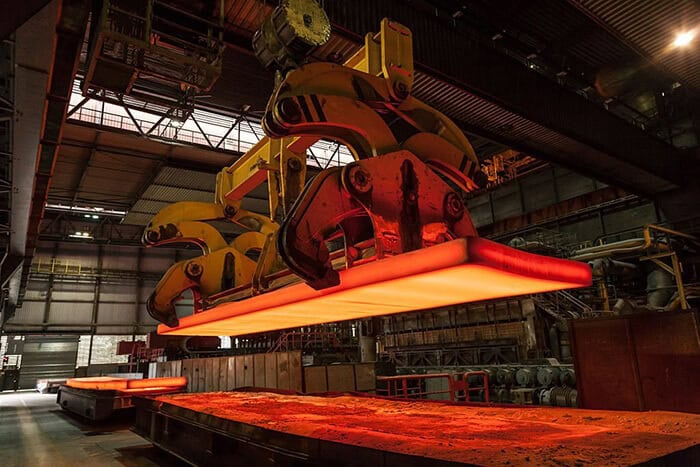1- The Need to Shape Steel
With the development of technology and metallurgical science, the capacities of the industrial sectors engaged in mass production and the types and shapes of the materials they use are changing in today's conditions. High temperatures are needed within the scope of the necessary shaping processes for new intermediate and complete products, and at these temperatures, materials are given a different form. In this process, the cooling process can be started after the relevant materials are given the desired shape.
2- What is Hot Rolling?
The deformation process at high temperatures to various metals or alloys formed by using different metals together is referred to as hot rolling. In this deformation process, the high temperatures required for recrystallization are preferred, where the ductility of the relevant materials, which expresses their resistance to breakage or breakage, is high. For the concept of hot rolling mill, it can be called shaping with hot and cold processes applied to metal. Additional processes are carried out to give the hot-rolled steel material sharper dimensions and delicate surfaces. These processes are known as cold rolling and are applied to steel after hot rolling.
3- Hot Rolling Process
In the process of making hot-rolled steel, the steel material is turned into liquid ore in furnaces where high temperatures are applied and poured into molds called slabs. In order to maintain theproperties and form of hot-rolled steel, surface treatment is carried out by using pressurized water at certain stages. During the rolling process, steel billets are processed in the annealing furnaces between 1200-1400 degrees in the rolling mill. As a result of the pressure applied to the annealed materials with the help of drums and rotary rollers, the thickness is reduced to 0.4-0.6 mm. Unbalanced elongations in the ends are cut off after rolling.
4- Thinning Procedures
After the hot rolling process is completed in general terms, the thinning process can be carried out in different ways in different working environments. At this point, rolling can be completed by making a go-between between two rollers, or it can be done at once in successive rows of drums. In both methods, the cooling process is carried out at the last stage and the desired materials are packaged.
5- Hot Rolling and Cold Rolling Costs
Hot rolling and hot rolling from cold rolling can be considered as the first treatments applied to a steel material. Since the materials that emerge in these processes are thick, they are not suitable for sensitive applications. In hot rolling, the cost of hot-rolled steel is lower because less processing is applied to the material. Therefore, the cost of cold rolling products will increase depending on the number of operations. The material obtained after hot rolling is left to cool at room temperature to remove internal stresses that may occur during the hardening process.
6- Hot and Cold Rolling Difference
The difference between hot rolling and cold rolling occurs when the steel is further processed to reduce thickness and width tolerances and to add detail. Since the details of hot rolled steel are few, it is preferred in rough construction works or train rails. From here, hot rolled steels are more preferred when there is no need for surface coating. In cases where it is desired to increase the surface quality, grinding, sandblasting and acid bath can be applied to the material in question. In this way, the steel material is also purified from lime and eventually made suitable for processes such as paint and surface coating.
7- Products Produced by Rolling
Finished products and rough products that do not require details are produced by hot rolling. These products can be square, rectangular, polygonal, round and flat, or they can be in the form of iron bars. In addition, hot rolled steels are used in the automotive industry for the production of rim and chassis parts. After providing ductility and toughness optimization, it is used in construction steels, building plates, construction machines, storage tanks and container production.

